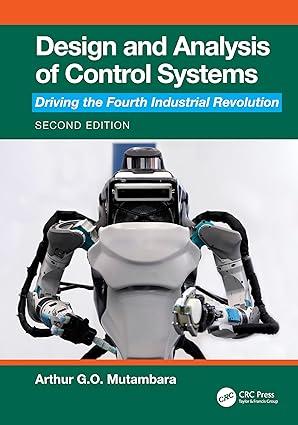Open-Loop Cruise Control System Design: Consider a car whose mass, (m=1,000 mathrm{~kg}) and (b=50 mathrm{Nsec} / mathrm{m}),
Question:
Open-Loop Cruise Control System Design: Consider a car whose mass, \(m=1,000 \mathrm{~kg}\) and \(b=50 \mathrm{Nsec} / \mathrm{m}\), where the reference (input) speed of interest is \(10 \mathrm{~m} / \mathrm{sec}\). Design requirements: The desired speed of the car is \(10 \mathrm{~m} / \mathrm{sec}(22 \mathrm{mph})\). An automobile should be able to accelerate up to that speed in less than 5 seconds. Since this is only a cruise control system, a 10\% overshoot on the velocity will not damage much. A \(2 \%\) steady-state error is also acceptable for the same reason. Keeping the above in mind, the following design criteria for this problem is proposed: rise time \(<5\) sec, overshoot \(<10 \%\), and steady-state error \(<2 \%\). The step function in MATLAB calculates the response to a step input \((1 \mathrm{~m} / \mathrm{sec})\). Hence, the input matrix \(\boldsymbol{B}\) will have to be multiplied by the magnitude of the reference speed, \(10 \mathrm{~m} / \mathrm{sec}\). As a result, the MATLAB command is given by \(\operatorname{step}\left(A, v_{r} * B, C, D, 1, tight)\).
Step by Step Answer:

Design And Analysis Of Control Systems Driving The Fourth Industrial Revolution
ISBN: 9781032718804
2nd Edition
Authors: Arthur G O Mutambara





